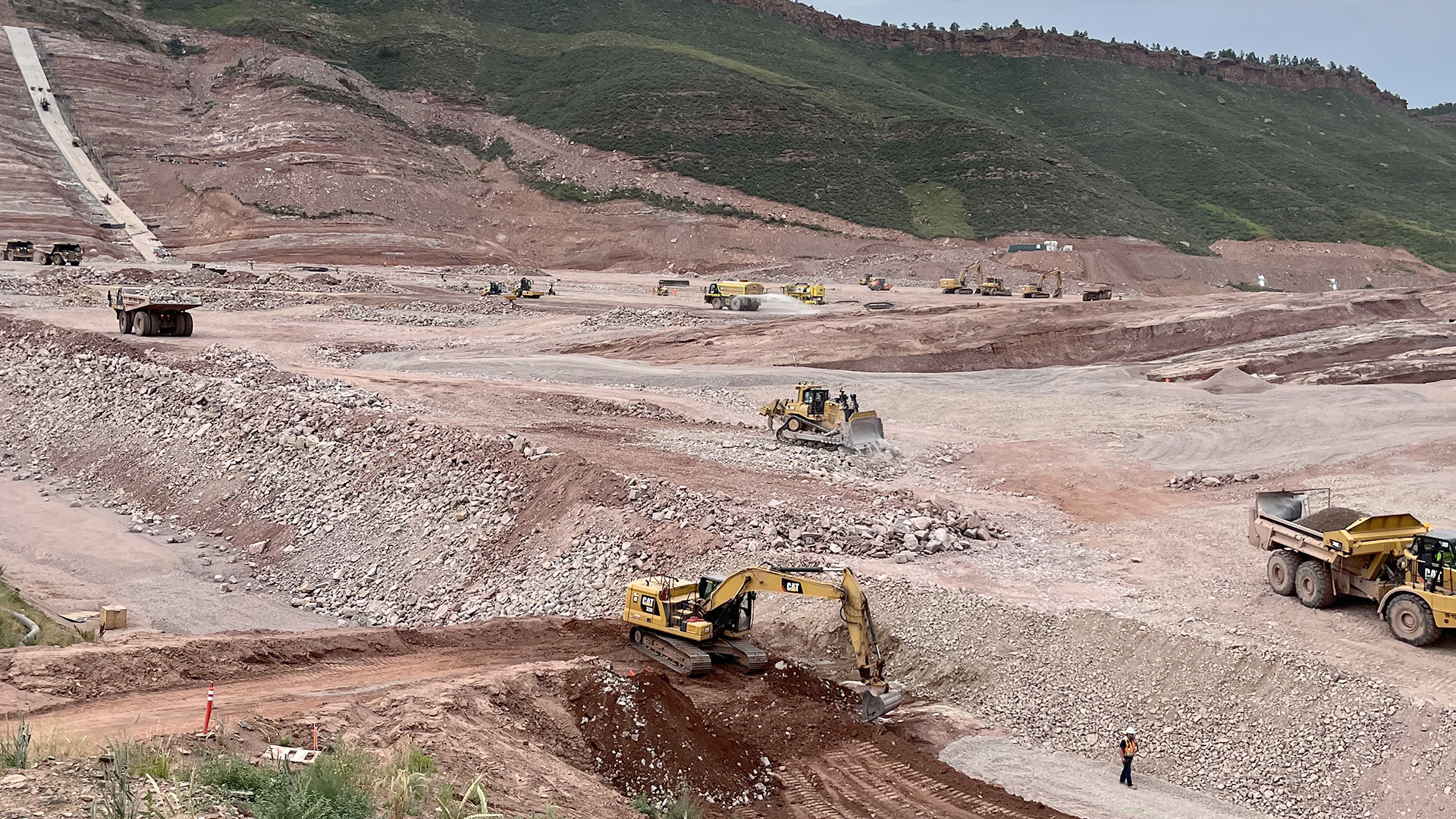“We will help with commissioning on the project, which involves putting water into the conduit and reservoir for the first time,” Nguyen said. “The goal is to make sure valves operate correctly, both in manual and remote operations.”
Stantec is working on the first fill plan for the project that will define how much water can flow into the new reservoir at any given time. Don Montgomery, Stantec’s Senior Principal Engineer, said they will define the program that addresses the dam safety of filling the new reservoir. Ultimately, the first fill plan will need to be approved by the Colorado State Engineer’s Office, Division of Dam Safety.
“We will work with water schedulers from Northern Water to manage the flow of water into the reservoir, and then refine the fill plan from a dam safety perspective,” Montgomery said.
The process will include determining a maximum rate of rise that is acceptable for the reservoir and then setting hold points, or pauses, in the filling to see how the dam responds at select water levels. As part of the plan, they have scheduled four hold points to have water levels sit for three to four weeks to see the response and confirm the dam is performing as expected.
Chimney Hollow Reservoir will store 90,000 acre-feet of water. An average year of snow and runoff can result in 30,000 acre-feet of water diverted to the East Slope for this project. Montgomery said they will only fill the reservoir based on available water supply and to make sure they are limiting the rate of reservoir rise to an acceptable rate and providing for hold points to allow for dam safety observations.
Throughout the commissioning process and first fill plan, Stantec will work alongside Northern Water staff and the State Engineer’s Office closely to observe instruments on the dam, review data and confirm the dam is operating as expected.
Work from Northern Water staff has already begun as crews inch closer to the start of operations. Control Center Department Manager Steve Anderson has started drafting the standard operating procedures, or SOPs, for Chimney Hollow. These SOPs include the purpose of the project, agency cooperation, operational logs, data reporting, communications, safety procedures, reservoir capacity, water rights, instrumentation, inspection guidelines and more.
“The SOP is designed to be in the same format as other Reclamation projects, for similarity and continuity across all projects,” Anderson said. “As the project gets built, we’ll add and modify processes of how things are operating.”
Northern Water Operations crews have also been on site at Chimney Hollow since the beginning of construction learning about the key reservoir components. Through a program called Chimney Hollow University, Northern Water’s three operations crews (mechanical, electrical and civil) visit the site monthly for a half-day training. Some sessions are in a classroom setting while others are in the field. By regularly bringing the crews on site, they are gaining first-hand experience of the reservoir components they will maintain once it is built. Once the valve house is complete, the Instrumentation Control and Electrical Engineering team will be conducting months of testing.
Once full, Operations crews will monitor the reservoir and conduct operations alongside other projects that Northern Water maintains.

